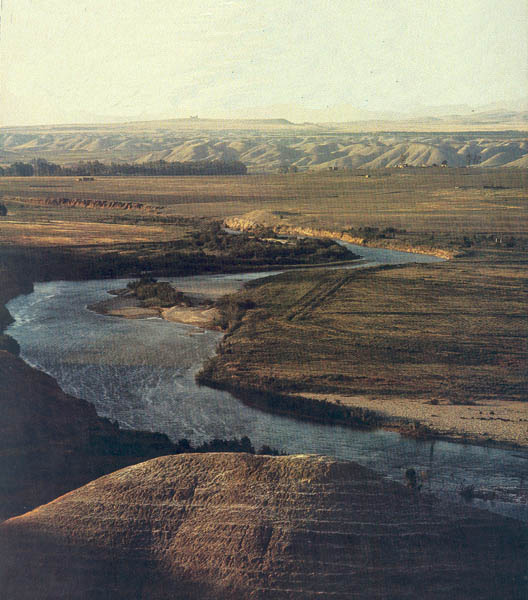Image Details

David Harris
The meandering Jordan (shown here). Rising on the flanks of Mt. Hermon, the Jordan winds south into the Sea of Galilee, exits from the southern end of the sea and then follows a sinuous path—a short stretch seen here—to the Dead Sea, 1,312 feet below sea level.
Modest in length, width and water capacity, the Jordan nevertheless occupies a preeminent position in the Bible as the most frequently mentioned geographical feature. Its small dimensions lend credibility to the biblical description of the Israelites’ crossing of the Jordan: When the priests bearing the Ark of the Covenent stood in the middle of the Jordan, its waters “stopped from flowing,” allowing the Israelites to pass over on dry ground (Joshua 3:13–17). In fact, temporary stoppages of the Jordan’s water, caused by the damming effect of collapsing banks, have occurred in 1267, 1546 and 1927.
Unlike the mighty Nile and Euphrates, the less impressive Jordan was valueless for agriculture or transportation, and probably for that reason did not encourage the development of a highly centralized, bureaucratic government. Instead the Jordan served as a natural boundary, a barrier to be crossed, a biblical symbol of spiritual transition.
